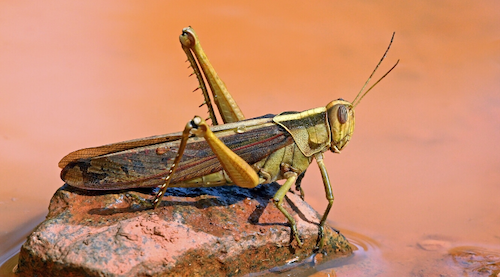
Locust Plague Up to 20 Times Worse Than Last Wave Could Devastate Parts of Africa and Middle East
Locust swarms have already ravaged countries like South Sudan, Uganda, Tanzania, Ethiopia, Kenya and Somalia.
(TMU) — East Africa is currently bracing itself for a plague of locusts that could be up to 20 times larger than the already historic swarms that blighted regional crops and spilled over into neighboring countries earlier this year.
The billions of insects comprised one of the worst locust outbreaks in roughly 70 years, darkening skies, ravaging key food sources, and consuming farmland in a region that is also facing the dire threat of the coronavirus pandemic.
The voracious swarms of young desert locusts have ravaged countries including South Sudan, Uganda, Tanzania, Ethiopia, Kenya, and Somalia, causing fears that a long vulnerable region could be plunged into a new era of extreme food insecurity.
The United Nations Food and Agriculture Organization (FAO) has described the problem in stark terms, calling the infestation “an extremely alarming and unprecedented threat” to food security and livelihoods across the region.
FAO continues to fight Desert Locust upsurge in East Africa and Yemen despite COVID-19 constraints
According to the UN, a swarm of locusts covering a third of a square mile is capable of eating the same amount of food in one day as 35,000 people.
The massive locust swarms began to appear in Ethiopia and Somalia earlier this year and have since spread to at least eight countries.
Climate change is the main cause of the unprecedented growth of the insect infestation, which entailed conditions ranging from 2018’s Cyclone Mekunu to unseasonal rainfall and local locust response systems shattered by armed conflict.
Experts from the FAO fear that a new generation of locusts is emerging in war-ravaged Yemen as well as Iran, whose own economy has been ravaged by sanctions, collapsing oil prices, and the impact of the SARS-CoV-2 pandemic.
The response to the coronavirus has also complicated and slowed efforts to fight the locust plagues, with border closures and lockdowns creating new challenges to regional cooperation. Meanwhile, the disruptions caused by the pandemic have also impacted the supply of chemical pesticides, biopesticides, and motorized sprayers to the region, said FAO Resilience Team Leader for East Africa Cyril Ferrand.
A failure to urgently fund and step up the campaign to suppress the desert locust infestations could see the number of the insect exponentially grow by 20 times in the upcoming rainy season, posing a risk to about 20 million people who are already in the grips of food insecurity as well as 15 million people in Yemen — which has for years experienced the world’s worst humanitarian crisis along with a crippling dependency on outside food aid due to the Saudi-led war on the Arab country.
The last locust outbreak occurring on a comparable scale took place in the mid-20th century, when monitoring and reporting was a much slower manual process. However, the availability of chemical pesticides wasn’t as much an issue then as now, allowing for relatively efficient control operations.
The rapid heating of the globe over the past decades has also brought the region to the current disaster.
Warming waters in the Indian Ocean—known as the Indian Ocean Dipole or “Indian Niño” due to its similarity to El Niño in the Pacific—have been linked to the uptick in cyclones across the Persian Gulf, dry weather in the east, flooding in the region, and even the raging bushfires across Australia.
Author: Elias Marat
Date: April 12th, 2020
Bio: Journalist
View from Original Post
Category Posts
“A word fitly spoken is like apples of gold in pictures of silver.”
Proverbs 25:11
Job 13:18
